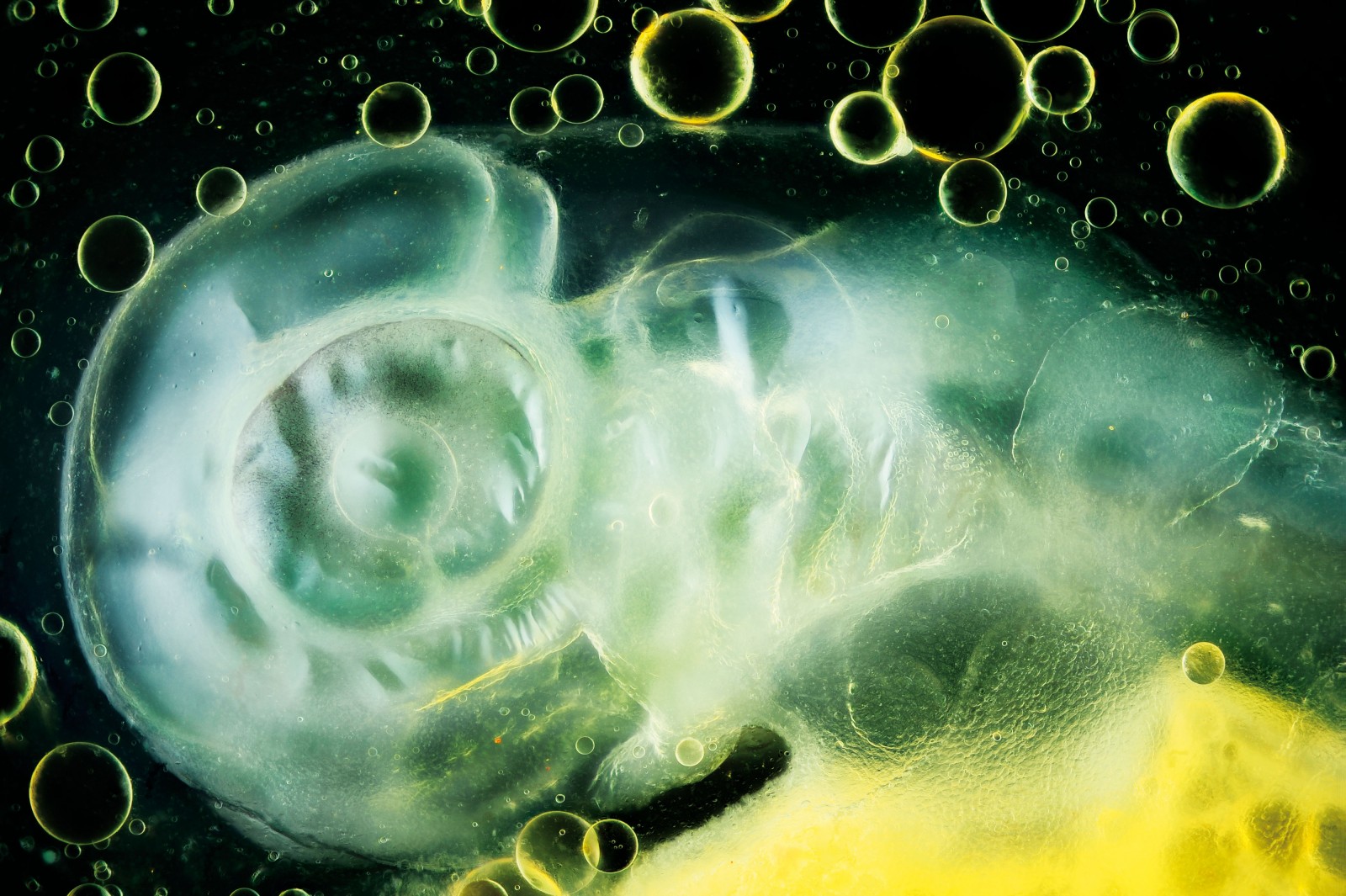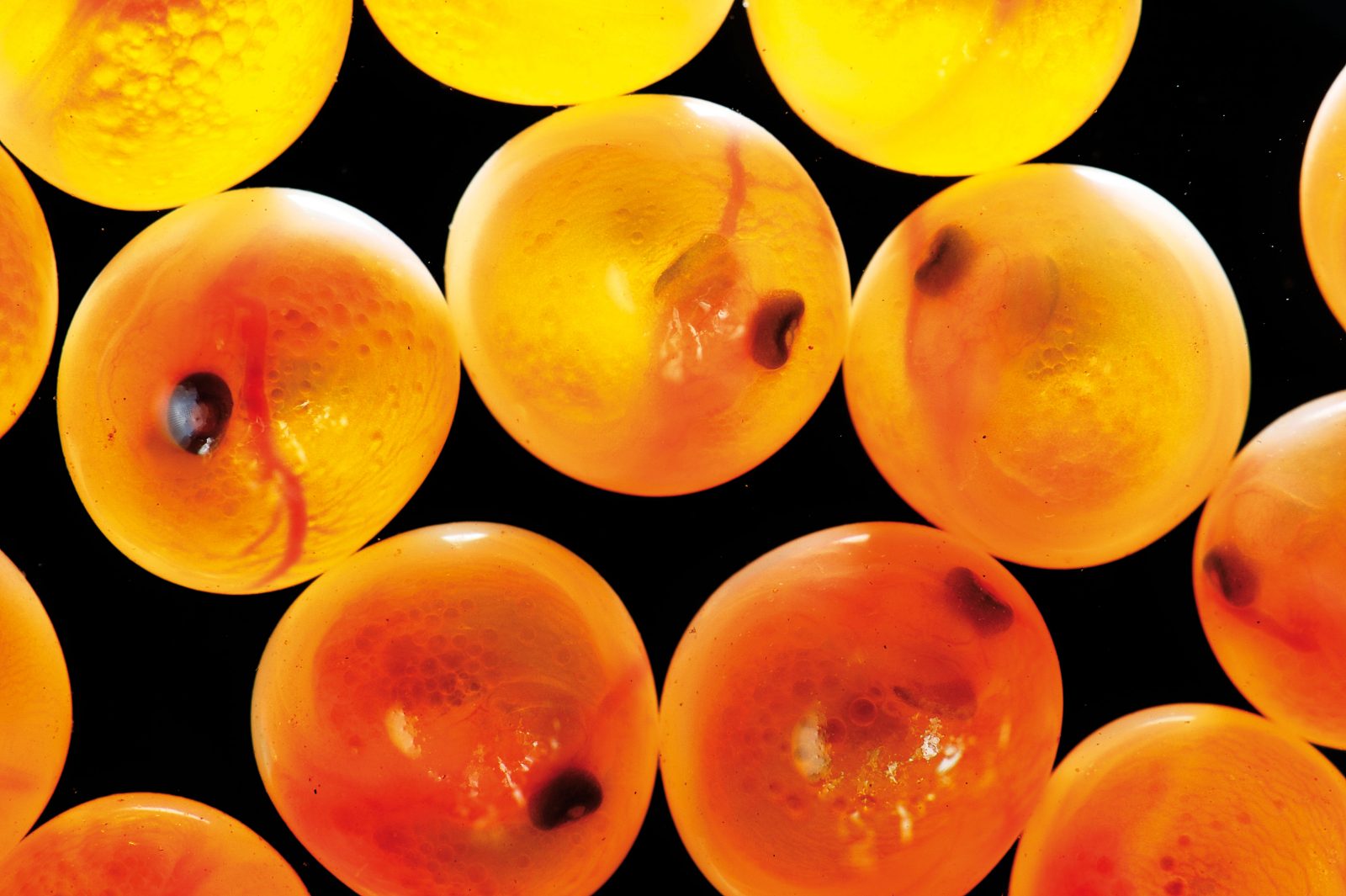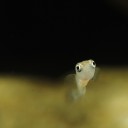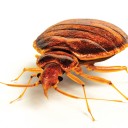
Signs of Life
Like a planet in space, a rainbow trout egg sparks and crackles as biological processes begin a miraculous transformation, the same that progresses silently in the inscrutable waters of New Zealand’s wild rivers every day. But even in clean rivers, the odds are stacked against this small vessel of life—only one in a thousand eggs will hatch and survive until adulthood.


Although sheltered by the shell of the egg, the embryo is still susceptible to pollution in the environment, especially in New Zealand rivers, which are high in nitrogen from farm run-off, effluent and fertilisers. While the nitrogen itself doesn’t seem to hamper development of the embryo, it is a stimulant for algae and fungi, often leading to large mat-like growths that smother aquatic life.
After just one week, this embryo has developed an unpigmented eye, mouth and the yolk sac critical for its nourishment over the next 40 days. At this stage, the embryo is so delicate that even small movements of the egg can halt development forever.
Egg incubation is measured in ‘degree days’—about 280 for rainbow trout (28 days at 10ºC), 340 for brown trout and about 500 for Quinnat salmon. (Some commercial salmon farms adjust the temperature of incubation to hatch eggs at a specific time.)
Ten days before the alevin hatches, its eyes become visible through the shell of the egg (below), which is now quite robust and can be handled with little risk to the developing embryos.


Rainbow trout choose to breed in winter in rivers with a moderate flow and gravel bottom. Hard stones such as granite or greywacke provide gaps for the eggs to fall into and a good surface for algae growth and insect production to provide food for the emerging fry. Although pumice is the predominant geology in the Volcanic Plateau —which includes Taupo and the Rotorua lakes—it is more mobile and has fine particles that tend to seal the gaps around the developing eggs, depriving them of oxygen. Egg survival in pumice is very low, a reason for the man-made trout hatchery in Rotorua, which produces up to 100,000 one-year-old fish for the local lakes each year.

The eye, which will be the primary mechanism for hunting, is already well developed. Fish have no eyelids, no iris and a much larger pupil to allow as much light to enter as possible. This results in relatively low visual acuity (or ‘resolution’) but phenomenal light sensitivity—a trout can find and catch a black fishing fly on a dark night.
Rather than an iris, trout use pigments to filter bright light, which can take several minutes to take effect.
The alevins become fry when the yolk sac has been used up, and grow into parr, which show vertical bars on their flanks as they develop the coloration associated with camouflage. Over their lifetime, the young rainbow trout will double their weight as many as 14 times as they grow from a 300-milligram egg into an adult weighing more than five kilograms.


















